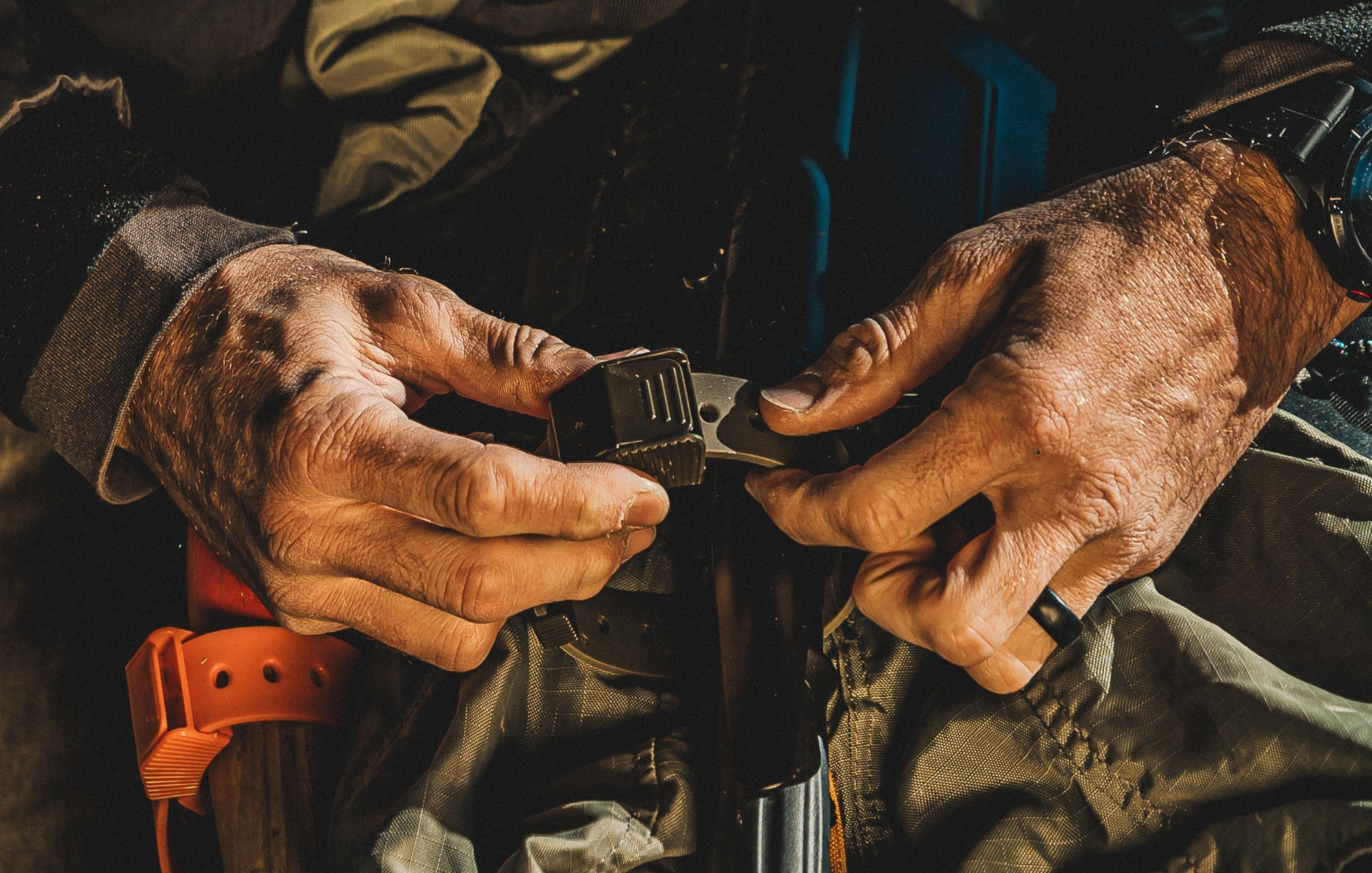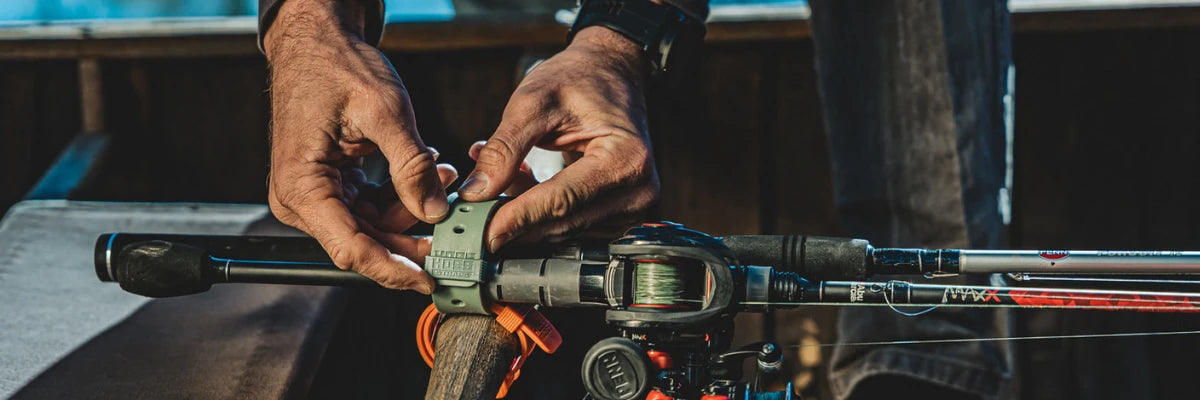Strap Keepers: Taming Loose Ends for a Clean Setup

Check out our all weather straps, tool organization, cord storage, tool storage, gear straps, and more!
If you've spent any time on the trail, at a job site, or organizing your gear, you know the feeling: excess straps dangling off your backpack, bouncing against your body, catching on branches. It's one of those small frustrations that compounds over time. What starts as a minor annoyance becomes a bigger problem—snagging, noise, wear and tear, and that unprofessional look you didn't sign up for.
That's where strap keepers come in. These simple, practical tools do one job exceptionally well: they tame loose webbing. Let's walk through what they are, why they matter, and how to use them to get your gear organized once and for all.
Why Loose Straps Matter More Than You Think
Dangling straps aren't just an eyesore. They create real, tangible problems in the field. When you're hiking through dense brush, rock scrambling, or working around machinery, loose webbing becomes a genuine safety hazard. Straps get caught on branches, snag on rocks, or tangle in moving parts. That snag can throw off your balance at the wrong moment or damage your gear when you need it most.
Beyond safety, loose straps create unnecessary noise and distraction. On a quiet hunt or a stealth approach, every flap and bounce telegraphs your movement. For contractors and tradespeople, messy strap management signals a lack of organization—the opposite of the professional image you're building.
Then there's the practical wear factor. Excess webbing flaps around, rubbing against itself, your gear, and the environment. This friction degrades the strap faster than it should, shortening the lifespan of equipment you've invested in. The solution isn't complicated, but it's essential: you need a way to bundle and secure that excess webbing so it stays in place.
What Are Strap Keepers?
A strap keeper is a small elastic device designed to bundle and hold excess webbing in place. Typically made from natural rubber or elastic material, they slip over loose straps and cinch them tight without damaging the webbing or leaving adhesive residue behind.
The design is straightforward: a loop of elastic or rubber that grips your strap without slipping or losing tension. Most strap keepers fit standard webbing widths—typically 1" to 1.5"—making them compatible with the vast majority of backpacks, bags, and gear equipment. They're reusable, adjustable, and require zero tools or setup.
The beauty of a well-made strap keeper is that it does its job invisibly. You install it once, and it works without fuss. No maintenance, no degradation, no wondering if it'll hold. That's the kind of reliability that matters in the field.
The Problems Loose Straps Create
Let's break down exactly what happens when you ignore strap management.
Safety Hazards: Loose webbing becomes a catch point. In outdoor environments, dangling straps snag on branches, roots, and rocks, potentially pulling you off balance or tearing your gear. For contractors working around power tools, loose straps around equipment pose an obvious danger.
Noise and Distraction: Every step you take, loose straps bounce and slap. On a hunting trip, a camping expedition, or any situation where stealth matters, that sound is a liability. It disrupts your focus and, in outdoor pursuits, advertises your presence.
Unprofessional Appearance: Whether you're showing up to a client's home, leading a job site, or representing your business, messy gear organization reflects poorly on your credibility. Tight, organized straps communicate competence and attention to detail.
Accelerated Wear: Webbing that flaps around gets abraded by friction. The fibers break down faster, fading occurs unevenly, and the strap weakens prematurely. This is especially true in harsh environments where UV exposure and weather compounds the damage.
Common Methods for Managing Excess Straps (and Why Strap Keepers Win)
Before strap keepers became standard, people got creative with workarounds. Here's how they compare:
Velcro Tape: Effective in the short term, but adhesive-backed Velcro degrades with repeated use and environmental exposure. The sticky backing loses grip over time, and you end up reapplying patches. It also leaves residue when you remove it.
Duct Tape or Electrical Tape: Cheap and quick, but tape deteriorates in UV sunlight and breaks down with moisture and temperature swings. After a few months of weather exposure, you're left with sticky goo and frayed edges.
Cutting Straps: Some people simply trim excess webbing. The problem? It's permanent. Once you cut, you can't adjust your gear if your needs change. You also lose the option to pass the gear to someone else with different body proportions.
Rubber Bands: They slip, snap, and degrade in sunlight. You're constantly replacing them, and they create environmental waste. Rubber bands also leave creases in webbing if left on too long.
Strap Keepers: The clear winner. They're reusable indefinitely, require no adhesive or tools, adjust to different strap thicknesses, and survive any weather condition. Once installed, they perform consistently for years. They're also the most affordable solution when you account for long-term use.
How to Use Strap Keepers
Installation is genuinely simple. Here's the process:
Step 1: Gather Your Excess Webbing: Identify the loose strap you want to tame. Bunch the excess webbing neatly, making sure it's not twisted or kinked.
Step 2: Slide the Strap Keeper On: Place the elastic loop around the bundled webbing. Center it along the excess length so the strap is evenly cinched.
Step 3: Adjust for Tightness: The strap keeper should hold the webbing firmly without cutting off circulation or crushing the fibers. Test it—if you can slide the bundle an inch or two, it's too loose. If you're deforming the webbing, it's too tight. You want a secure, consistent grip.
Step 4: Check Durability: Once in place, tug on the bundled strap gently. It should stay put under normal activity. If it slips, reposition or try a different strap keeper size.
That's it. No adhesive, no cutting, no permanent decisions.
Where Strap Keepers Make the Biggest Difference
Backpacks and Hiking Gear: Shoulder straps and hip belt extensions often have excess webbing. A strap keeper on each side keeps everything tight and prevents bouncing while you move through rough terrain.
Construction and Contractor Equipment: Tool belts, equipment harnesses, and gear bags benefit enormously from organized straps. When your setup looks professional and controlled, clients notice.
Camping and Outdoor Tools: Tents, tarps, and specialized outdoor gear often come with multiple adjustment straps. Strap keepers keep excess webbing from tangling and getting snagged on branches.
Home Organization and Storage: If you're bundling cables, cords, or webbing for storage in a garage or shed, strap keepers organize everything neatly. They're perfect for creating labeled, compact bundles that don't unravel.
Vehicle and Cargo Management: Securing loads on trucks, trailers, or roof racks involves multiple tie-down straps. Strap keepers keep the excess from flapping and creating noise or safety hazards on the road.
Why Quality Matters
Not all strap keepers are built the same. Cheap elastic stretches out and loses grip. Thin rubber cracks in cold weather. Poor manufacturing means inconsistent sizing that makes them difficult to position correctly.
Quality strap keepers are made from durable, weather-resistant rubber or elastic that maintains tension for years. They fit securely without slipping, and they're thick enough to grip webbing reliably in any condition. When you're relying on your gear to work in harsh environments, the last thing you want is a strap keeper that gives up after a season of use.
Investing in solid, well-made strap keepers means you install them once and move forward. You're not replacing them, troubleshooting slippage, or dealing with adhesive residue. That's the difference between a product you grudgingly use and one you trust.
Finding the Right Strap Keepers for Your Gear
When shopping for strap keepers, consider a few practical factors:
Webbing Width: Standard strap keepers fit 1" and 1.5" webbing. Measure the straps on your gear before buying to ensure compatibility. Hoss Straps offers strap keepers designed for standard webbing widths, so you can trust the fit.
Quantity: How many straps do you need to tame? A typical backpack might need two to four strap keepers. A tool bag with multiple adjustment points might need six. Buy a few extras—they're inexpensive insurance for keeping your entire kit organized.
Material Quality: Look for strap keepers made from natural rubber or high-grade elastic. These materials hold tension longer and resist UV degradation better than cheaper alternatives.
Reusability: This is non-negotiable. Your strap keepers should work with different gear setups as your needs evolve. Choose products designed for long-term use, not single-application disposal.
Once you've added quality strap keepers to your gear, you'll notice an immediate difference. Straps stay tight, your equipment looks organized and professional, and you eliminate one more distraction from your work or adventure.
FAQ: Strap Keepers Answered
1. What size strap keeper do I need for my backpack?
Most modern backpacks use 1" or 1.5" webbing. Measure the width of the strap you want to organize and match it to the strap keeper size. Standard strap keepers from quality manufacturers fit these widths reliably, and they often come in multipacks so you have options for different gear.
2. How many strap keepers should I buy?
It depends on your gear, but a good starting point is two to four per bag or piece of equipment. Shoulder straps, hip belt extensions, and adjustment points are the main candidates. For contractors with multiple bags and tools, buying a 6- or 12-pack ensures you have coverage across your entire kit without running short.
3. Do strap keepers work on all types of straps?
Strap keepers work best on standard woven nylon or polyester webbing. They grip these materials reliably. Elastic straps, soft neoprene, or specialty materials sometimes don't hold as securely, so test on a non-critical area first if you're unsure.
4. Can I reuse strap keepers if I change my gear setup?
Absolutely. That's one of the biggest advantages of strap keepers. Unlike adhesive solutions, strap keepers slip on and off without damage, so you can move them between bags, adjust them as your gear evolves, or pass them along to someone else. A quality set of strap keepers is a long-term investment in organization.
5. How long do strap keepers last?
Well-made strap keepers from quality manufacturers last for years with normal use. Natural rubber and high-grade elastic resist UV degradation and maintain tension through hundreds of adjustments. Unless you're storing them in extreme heat or sunlight year-round, you can expect them to outlast the gear they organize.
Keep every strap secure and organized. Explore our full strap collection at Hoss Straps and find the perfect fit today!







